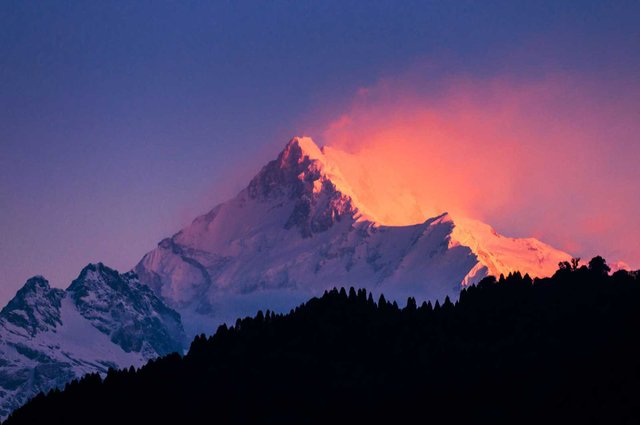Kanchenjunga South Base Camp Trek Without a Guide Is Not as Easy as You Think
Going alone might seem adventurous, but in this part of Nepal, it quickly becomes a struggle
From Taplejung, the trail toward Kanchenjunga South Base Camp runs through villages like Khesewa, Mamankhe, and Yamphuding. These names are rarely heard in tourist circles, and the trail is just as under-visited. Within a few hours, I realized that route signs were missing and paths split in multiple directions. Asking locals helped—sometimes. But many didn't speak Nepali fluently, and communication was mostly by hand signals. A guide would’ve moved confidently through these areas, but I had to stop often, check maps, and hope for the best.

River Crossings Are Not Always Safe
There were several times I had to cross rivers using temporary bridges or slippery wooden logs. Without someone local to confirm whether it was the main route or just a shortcut used by herders, I hesitated. Once, I crossed the Kabeli Khola too early and ended up on a muddy livestock path. I had to climb back uphill through thick undergrowth just to rejoin the main trail. This mistake cost me half a day, soaked boots, and bruised confidence.
Staying in Villages Without a Guide Felt Awkward
In remote villages like Tortong and Tseram, lodging is basic and there are few options. I arrived late once and was met with unsure stares. Without a guide to speak on my behalf or explain my plans, the locals were hesitant to offer a room. I finally got a place to sleep, but it felt like I had forced myself in. A guide brings familiarity and trust. I had neither. It turned every interaction into a task.
Altitude Caught Up Quietly
The trail climbs fast after Tseram. Oxygen drops, and the landscape turns into rocky terrain and open skies. I was alone and getting slower. I felt lightheaded, cold, and completely unsure about my body’s reaction. Without a guide to notice signs of altitude sickness or to adjust my schedule, I kept pushing—thinking I was just tired. I later learned that resting an extra night could have made my climb to Oktang viewpoint safer and more enjoyable.
Oktang Was Beautiful—Getting There Wasn’t
Oktang viewpoint offers a full face of Kanchenjunga. The silence, the glacier, the wide sky—it’s all there. But getting there was a test. I lost the trail for a while in a moraine section where the rocks and snow cover paths. I ended up going in circles until I spotted old prayer flags. There was no one around, and I felt completely cut off. With a guide, I would’ve reached there earlier, with more energy and less stress.
The Return Journey Felt Longer
On the way back, my body was tired, but more than that, my motivation had dropped. I had no one to talk to, no one to help with logistics or encourage me when I slowed down. Carrying all my gear, worrying about food at the next stop, and managing weather without updates—it all started to weigh on me.
What I Missed by Not Taking a Guide
It wasn’t just about safety. I missed the local stories, the small cultural insights, and the shared tea talks in remote homes. A guide would’ve helped me connect with the people, explained the customs, and turned the journey into something more than just walking. Instead, I walked through culture without truly experiencing it.
Final Thought
Kanchenjunga South Base Camp is peaceful and raw. That’s what makes it special—but also what makes it challenging. You walk through remote hills, sleep in villages untouched by modern tourism, and climb to viewpoints that feel like the edge of the world. But going without a guide strips away the comfort, the local bridge, and sometimes, even the safety. If you want to go beyond just reaching the base camp and actually experience the heart of this region, take someone who knows it well.